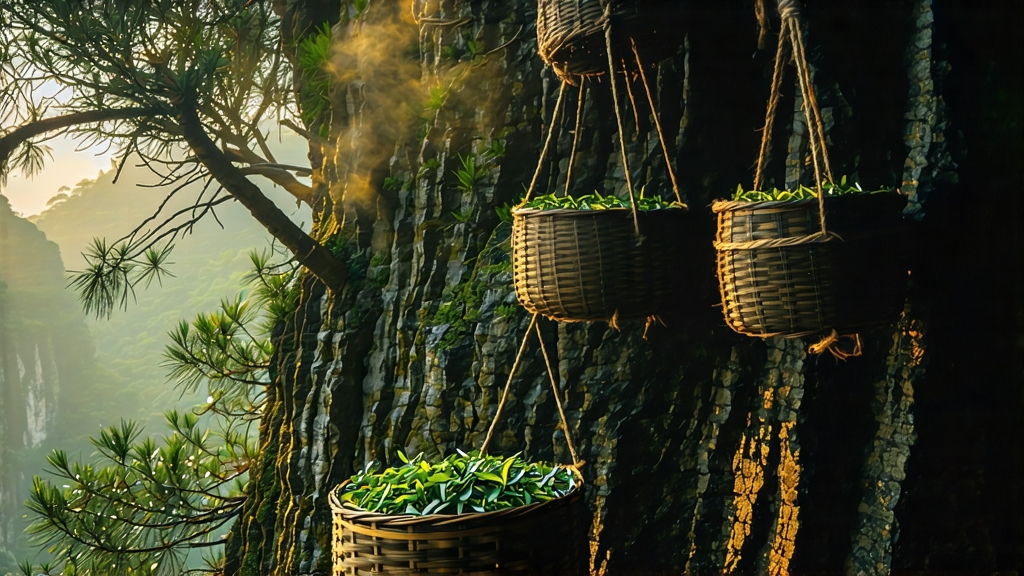
Long before English breakfast tables knew the word “black tea,” caravans loaded with dark, leathery leaves left the granite gorges of northern Fujian. Those leaves were Lapsang Souchong—today the oldest documented black tea on earth and the prototype that launched every later variant from Ceylon to Assam. To understand why this smoke-kissed tea still bewitches palates from Moscow to Manhattan, one must walk the 1,500-metre ridges of Tongmu Guan, the tiny protected village tucked inside the Wuyi UNESCO reserve where the story begins.
Legend fixes the birth year at 1568, late Ming dynasty, when a passing army commandeered a tea factory and the anxious workers dried the leaves over fresh pine fires to hasten the finish. The accidental smoke infusion proved marketable; Dutch traders pronounced it “bohea” (from the Min-dialect “wuyi”), and by 1604 the first chests reached Europe, priced higher than silver. Over the next two centuries Lapsang Souchong financed Amoy clippers, inspired Duchess Anna’s afternoon ritual, and seeded the Assam gardens when Robert Fortune smuggled Tongmu saplings to British India. Thus every modern black tea carries, in some recess of DNA, the fingerprint of this pine-scented ancestor.
Geography is destiny. Tongmu sits in a mist-locked canyon where the Min River cuts through rhyolite cliffs; the humid air traps cool airflows that slow leaf growth and concentrate sugars. Only six surrounding hamlets may legally sell true “Zheng Shan Xiao Zhong,” the protected-origin name. Outside that circle, similar leaf processed elsewhere is merely “wai shan” (outer-mountain) tea, flatter in aroma and quicker to bite. Within the zone, two cultivars dominate: the small-leaf Cai Cha, prized for its cocoa note, and the large-leaf Da Bai, which yields a sweeter, maltier cup. Between them they create the yin-yang balance that defines authentic Lapsang.
Craft begins in the pre-dawn chill of late April. Pickers take only the central three leaves of each shoot, still dewy, because surface moisture helps the withering that follows. The leaves are spread on bamboo screens set over riverside huts; cool canyon air wafts up through slatted floors for eight hours, softening cell walls without bruising. Once the leaf loses 60 % of its weight, it is rolled—first mechanically to rupture cells, then by hand to twist the leaf into the signature strip that the locals call “eyebrow of the phoenix.” Oxidation follows in cedar-lined trays kept at 24 °C and 85 % humidity; here chlorophyll breaks into theaflavins, turning the leaf from jade to copper in exactly 90 minutes. The master’s skill lies in stopping the oxidation at the precise moment when floral top notes peak yet malt body is promised.
Smoking is the stage that divides purists from pragmatists. Traditionalists build a pinewood fire in an earthen pit, cover it with fir slabs, then lay the tea on bamboo racks two metres above the embers. The smoke must be cool (below 40 °C) and fragrant with resin; too hot and the leaf bakes, too cold and the aroma turns sooty. Over the next twelve hours the tea is turned every 30 minutes, absorbing volatile guaiacol and syringol that give the unmistakable pine, dried-longan and whisky warmth. A newer “unsmoked” style, favoured for the domestic Chinese market, omits this step and instead dries the leaf over charcoal heated by hot air, yielding a honeyed, raisin-like liquor closer to a Keemun. Both styles carry the same name, so buyers must ask explicitly: you xun (smoked) or wu xun (unsmoked)?
Grading follows leaf size and season. The highest grade, “Jin Jun Mei,” invented only in 2005, uses only buds picked the first week of April; it is unsmoked and brews a shimmering gold liquor with notes of caramelised peach and raw cacao. Next comes “Te Ji” (special grade) Souchong—one bud with two leaves, lightly smoked, balancing sweetness against campfire. “Yi Ji” (first grade) is what most exporters label simply Lapsang Souchong: larger leaf, deeper smoke, the tea that